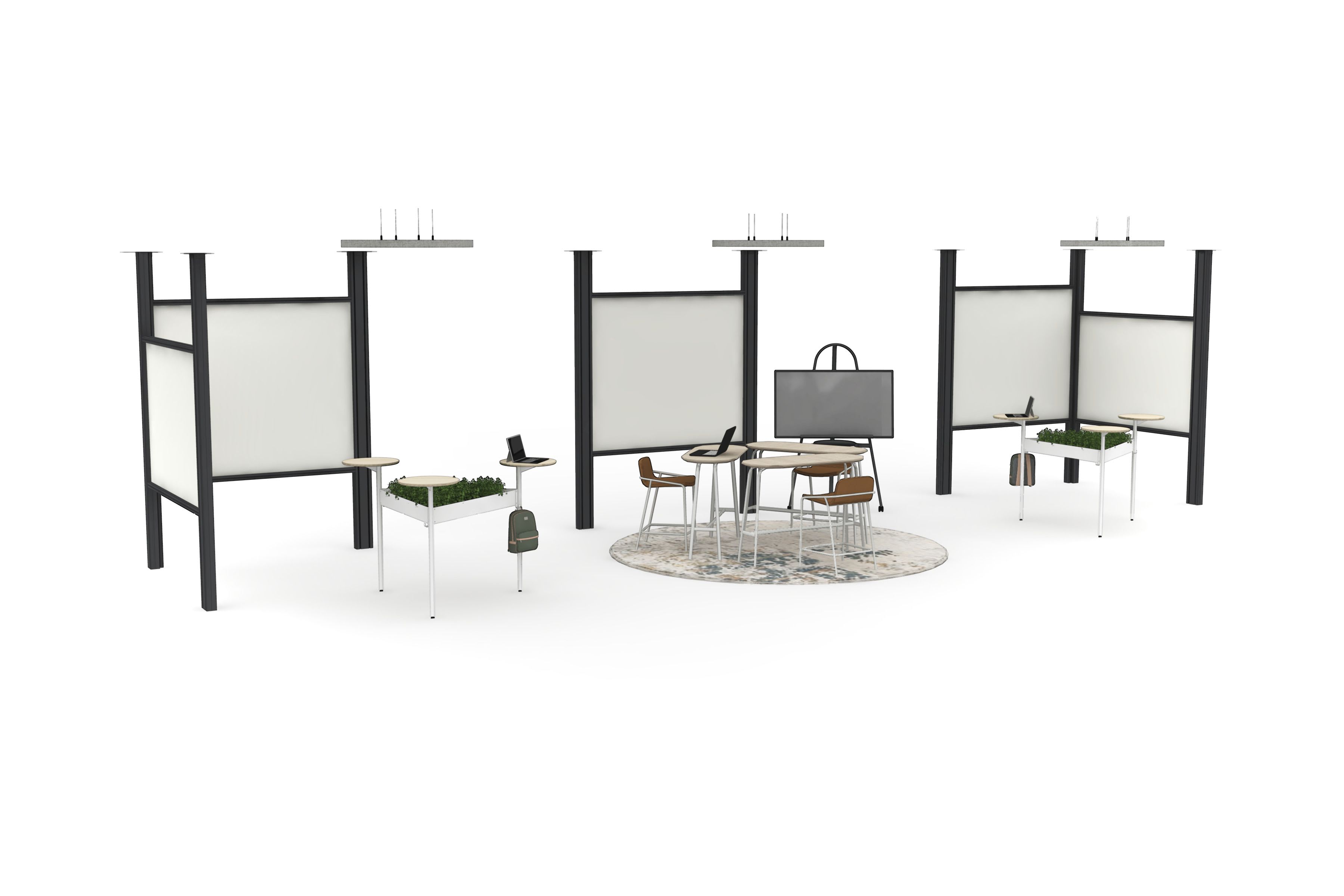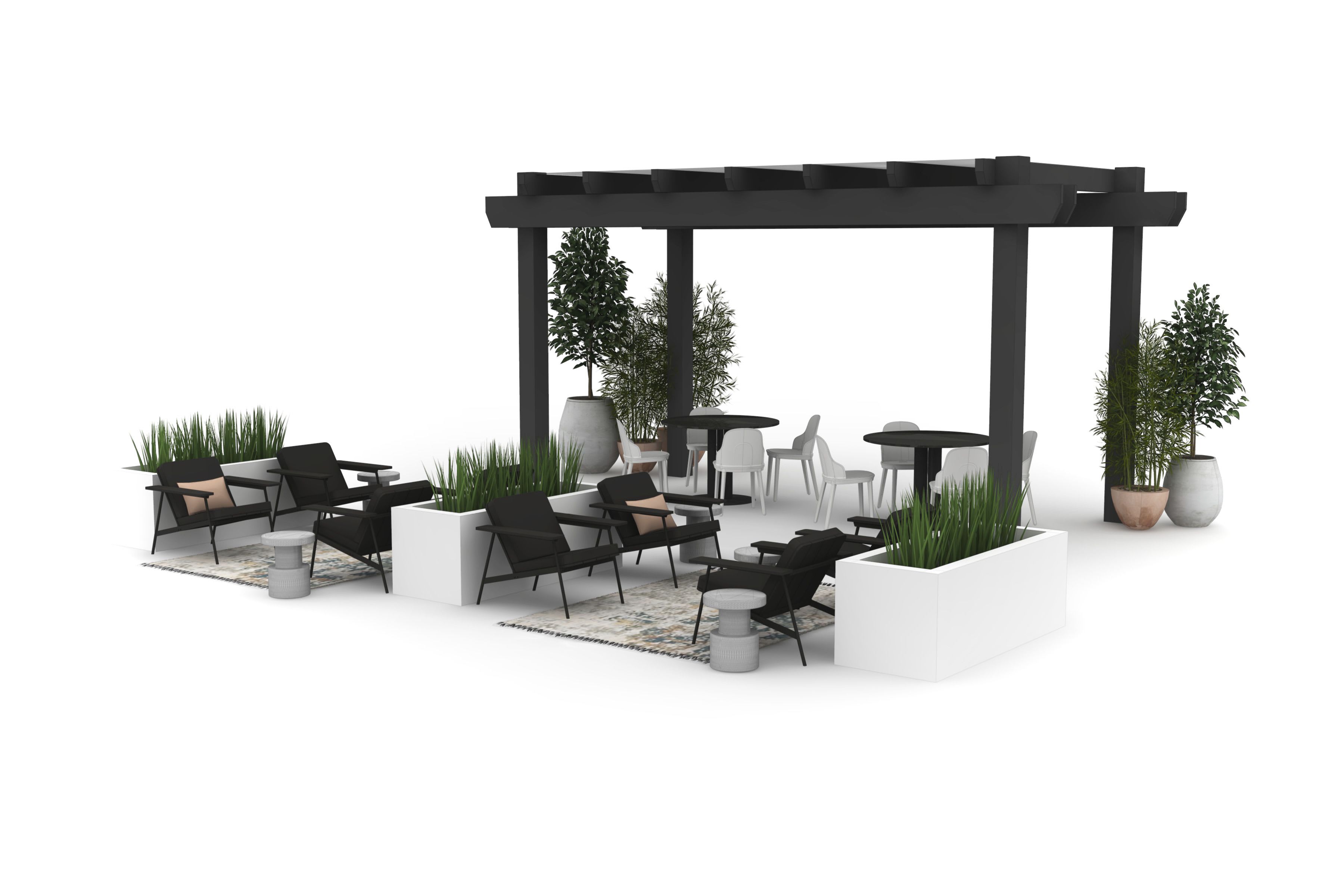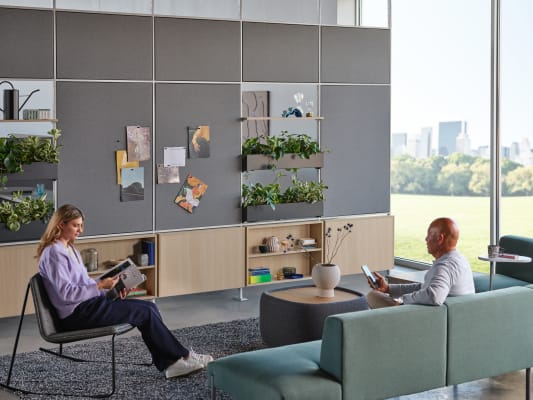Design to Allow for Reregulation
Trauma Informed Design considerations may deter dysregulation; however, it will be impossible to completely prevent all individuals from becoming dysregulated in all situations – through no fault of the individual or the design. Therefore, it is important that the design of our environments mindfully incorporate opportunities for people to recover should they become activated.
As previously discussed, dysregulation can manifest in drastically different modalities. Below are design considerations that may allow individuals to reregulate in a way that aligns with their needs in the moment.5 These considerations are non-inclusive, and do not incorporate individual strategies and interventions that can be immensely impactful as they are outside of the scope of this discussion.
Fight
Reregulation from a fight response often requires a release of energy in a safe way. Examples may include exercise, running, walking, or yelling. Individuals may benefit from access to walking paths, gym equipment, and sound-proof areas.
Flight
Lowering stimulation and allowing for solitude may be helpful to individuals in a flight response who are seeking to become reregulated. Individuals may seek out a location to isolate themselves from other people, from sounds, and from any other sensory input. It may also be helpful to literally sit or lay on the ground to stimulate a sense of grounding. Private meditation or yoga spaces may be acceptable places for this reregulation.
Freeze
Many individuals experiencing dysregulation as freeze or flop benefit from opportunities to refocus on their physical presence – to ‘get back into their bodies.’ Examples of activities that may support reregulation include being able to feel a breeze, rocking, proximity to a water feature, or working on a monotonous task like a puzzle or organizing books. Design considerations may include opportunities for outdoor access, incorporation of rocking furniture, spaces to work on repetitive tasks.
Fawn
Reregulation from a fawn response can be aided by allowing for areas where individuals feel as though they provide defined physical boundaries while allowing for continued communication and interface with others. Proximity of workstations and collaborative seating should be scrutinized to ensure that employees are not at risk of feeling as though their space is being occupied without consent. Additionally, non-dedicated workspaces should thoughtfully incorporate environments where employees can be collaborative while maintaining clear separation of physical space – for example discrete lounge pieces placed at a reasonable distance, or tables that suggest delineated space.
An individual may not be able to define how or why they are dysregulated, nor should an individual have to wait to fully understand. Many individuals may simply sense unease, discomfort, or heightened sensitivity. These spaces and considerations may allow these individuals to find areas that feel comfortable in these situations as well. All spaces should be accessible, welcoming, and encouraged for all employees, in all states of regulation.
Understand why trauma is and the importance of Trauma Informed Design. Define dysregulation types.
Trauma is almost universal. View considerations to dissuade dysregulation.









